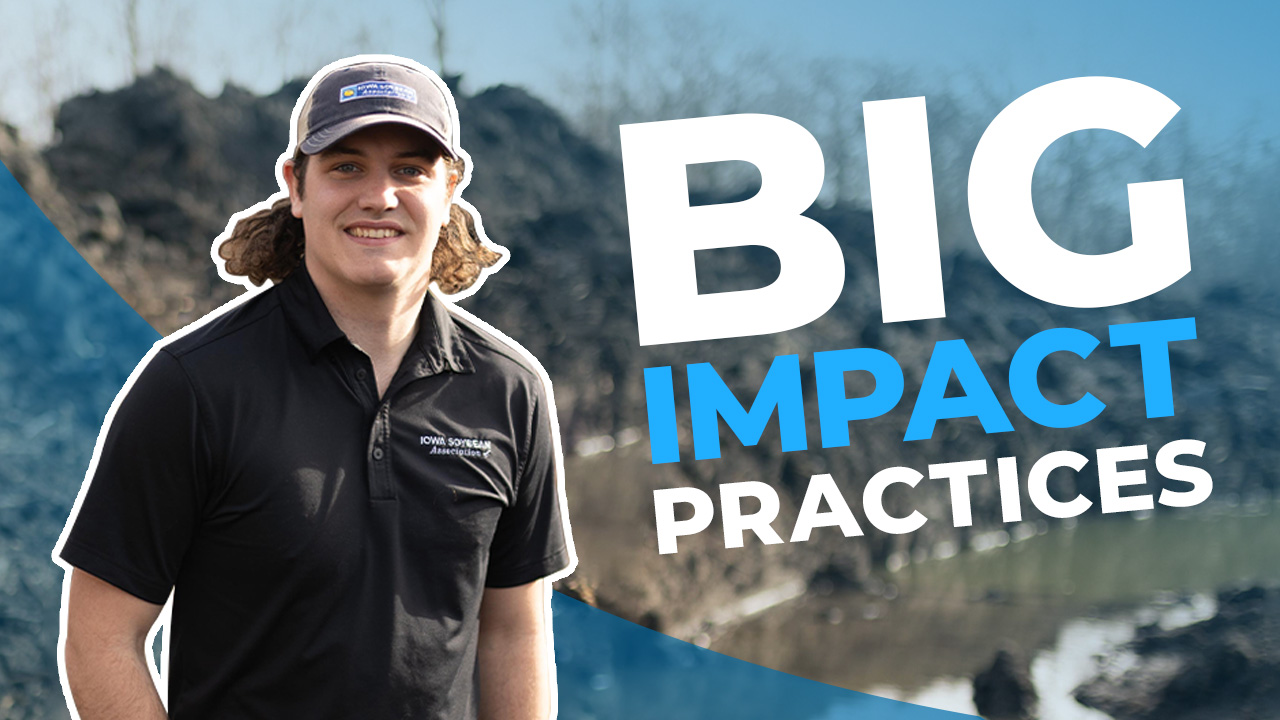
(Photo: Iowa Soybean Association)
Edge-of-field practices that have a BIG impact
May 25, 2023 | Kriss Nelson
Brandon Iddings, Iowa Soybean Association (ISA) field service program manager, explores various edge-of-field practices and their impact on water quality from the field to the water lab.
“We don’t have to be doing the typical agriculture edge-of-field practices; we can do some of these more natural practices that provide habitat opportunities such as an oxbow restoration or prairie strips,” says Iddings. “We can get creative and determine what we can do to benefit those acres.”
Water sampling
When deciding what edge-of-field practice could work best on your farm, water sampling is a way to assess your farm’s nutrient performance.
Iddings explains how ISA can measure for nutrients in water coming off your farm with their on-site water lab. ISA water lab service manager Tony Seeman can provide individual reports so farmers know where to target resources for best nutrient management.
Oxbow restorations
Iddings says restoring oxbows is beneficial for wildlife and water quality.
“Oxbows act like a nursery for small, minnow-type species of fish, deer and waterfowl,” he says. “But they are also good for floodwater storage.”
Prairie strips
Prairie strips are another conservation practice to consider. They are comprised of native prairie plantings in crop fields.
“They can also be a pollinator habitat and a place for deer and birds,” says Iddings. “They also protect soil and water, acting like a terrace in the field.”
Drainage water management
Iddings also discusses drainage water management through drainage water recycling as a newer edge-of-field practice.
Iddings noted that Chris Hay, ISA conservation design scientist, has been assisting producers in implementing these practices and is researching the potential profitability opportunities with the practice.
Back